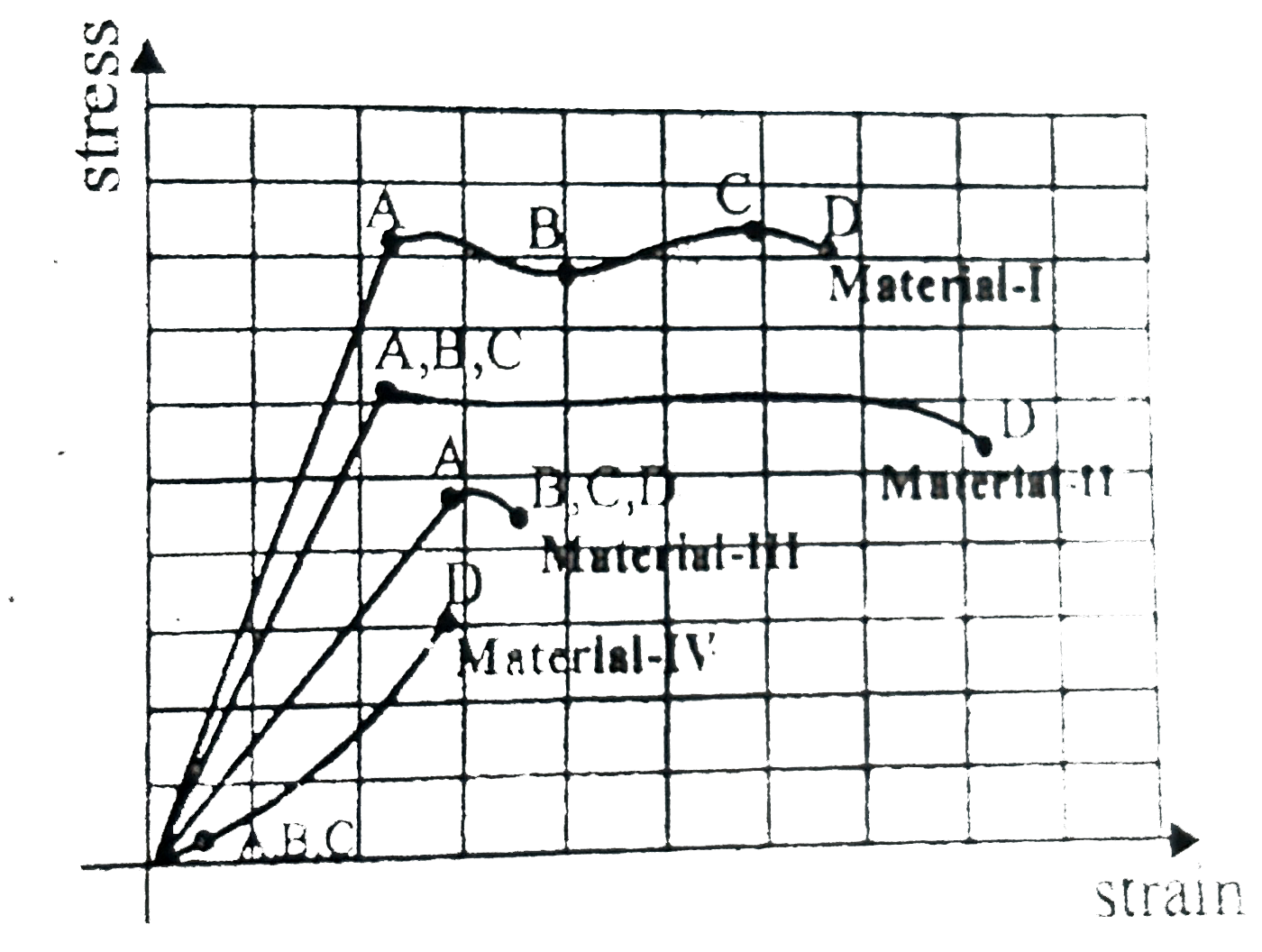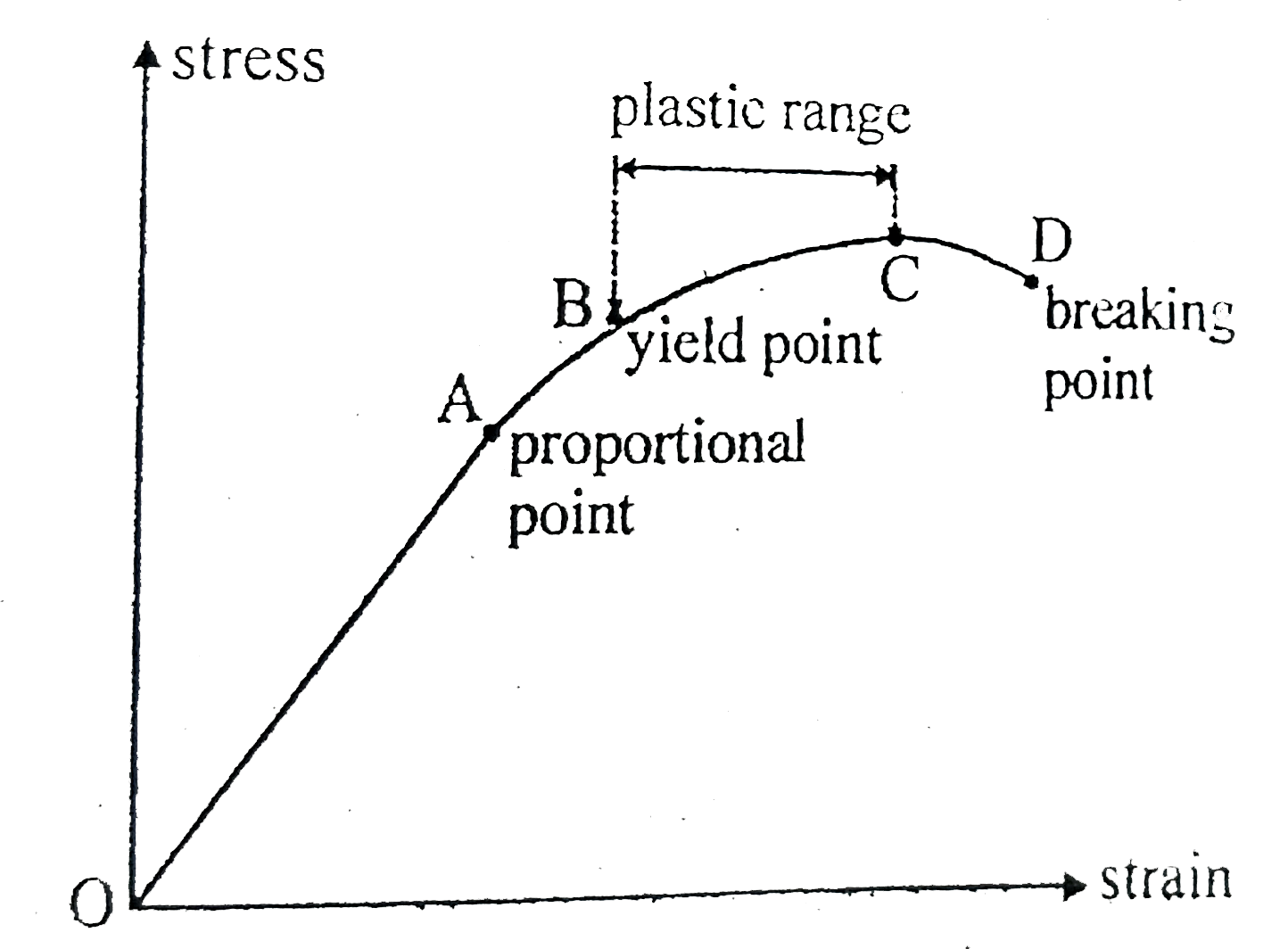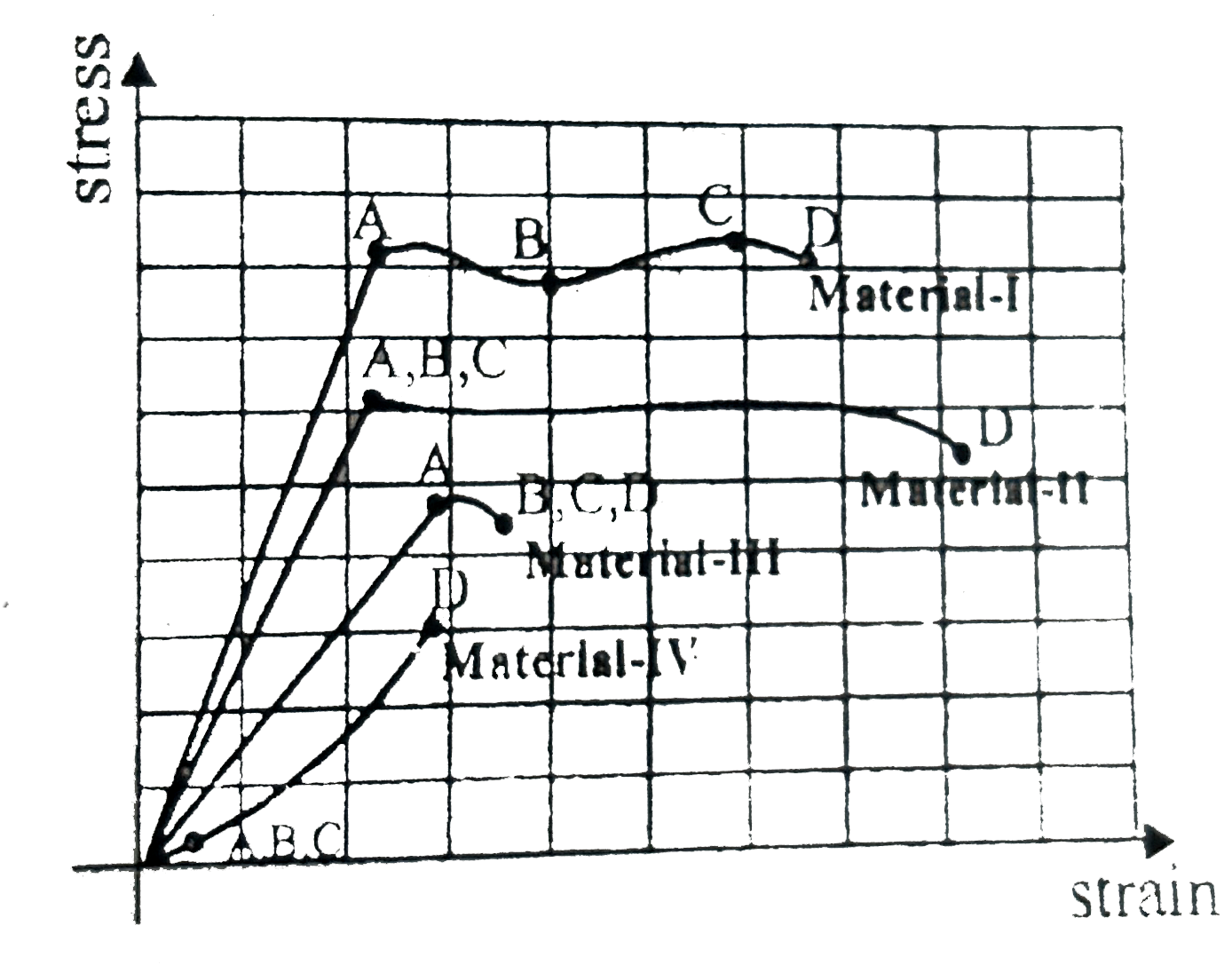For a steel wire, stress is directly proportional to strain. This is possible only when
the wire undergoes plastic deformation.
wire is loaded till the breaking point.
wire is loaded till the elastic limit.
wire exhibits neck formation.
The correct Answer is:C
Step by step video, text & image solution for For a steel wire, stress is directly proportional to strain. This is possible only when by Physics experts to help you in doubts & scoring excellent marks in Class 12 exams.
Topper's Solved these Questions
- BOOK - TARGET PUBLICATIONCHAPTER - ELASTICITYEXERCISE - Critical Thinking54videos
ELASTICITY
- BOOK - TARGET PUBLICATIONCHAPTER - ELASTICITYEXERCISE - Competitive Thinking69videos
ELASTICITY
- BOOK - TARGET PUBLICATIONCHAPTER - CURRENT ELECTRICITY EXERCISE - Evaluation Test6videos
CURRENT ELECTRICITY
- BOOK - TARGET PUBLICATIONCHAPTER - ELECTROMAGNETIC INDUCTIONEXERCISE - EVALUATION TEST8videos
ELECTROMAGNETIC INDUCTION
Similar Questions
Attempt any THREE :
Derive an expression for strain energy. Hence show that strain energy per unit volume is directly proportional to the square of the stress.View SolutionA: Lateral strain is directly proportional to the longitudinal strain within the elastic limit.
R:Poission ratio for a given material at a constant temperature is constant.View Solution
Knowledge Check
- Question 1 - Select One
Within the elastic limit, stress is directly proportional to strain produced in a body is the statement of
ARobert's lawBHooke's lawCNewton's lawDBoyle's law - Question 2 - Select One
Figure shows the relationship between tensile stress and strain for a typical material. Below proportional point A, stress is directly proportional to strain which means Young's moudulus (Y) is a constant. In this region the material obeys Hooke's law.

Provided the strain is below the yield point 'B' the material returns to its original shape and size when the force is removed. Beyond the yield point, the material retains a permancnt deformation after the stress is removed. For stresses beyond the yeld point, the material exhibit plastic flow, which means that it continues to elongate for little increases in the stress. Beyond C a local constriction occurs. The material fractures at D (i.e. breaking point). The graph below shows the stress-strain curve for 4 different materials.

Material which is good for making wires by stretching isAMaterial-IBMaterial-IICMaterial-IIIDMaterial-IV - Question 3 - Select One
Figure shows the relationship between tensile stress and strain for a typical material. Below proportional point A, stress is directly proportional to strain which means Young's moudulus (Y) is a constant. In this region the material obeys Hooke's law.

Provided the strain is below the yield point 'B' the material returns to its original shape and size when the force is removed. Beyond the yield point, the material retains a permancnt deformation after the stress is removed. For stresses beyond the yeld point, the material exhibit plastic flow, which means that it continues to elongate for little increases in the stress. Beyond C a local constriction occurs. The material fractures at D (i.e. breaking point). The graph below shows the stress-strain curve for 4 different materials.

Material which is most brittle isAMaterial-IBMaterial-IICMaterial-IIIDMaterial-IV
Figure shows the relationship between tensile stress and strain for a typical material. Below proportional point A, stress is directly proportional to strain which means Young's moudulus (Y) is a constant. In this region the material obeys Hooke's law.

Provided the strain is below the yield point 'B' the material returns to its original shape and size when the force is removed. Beyond the yield point, the material retains a permancnt deformation after the stress is removed. For stresses beyond the yeld point, the material exhibit plastic flow, which means that it continues to elongate for little increases in the stress. Beyond C a local constriction occurs. The material fractures at D (i.e. breaking point). The graph below shows the stress-strain curve for 4 different materials.

If you bough a new shoe which bites in the beginning and later on fits perfectly, then the material used to making the shoe isView SolutionThe longitudinal strain is only possible in
View SolutionStatement-1 : The value of moduli of elasticity is directly proportional to stress.
Statement-2 : The value of moduli of elasticity is inversely proportional to strain.
Statement-3 : The value of moduli of elasticiy is independent of magnitude of stress and strain.View SolutionAssertion (A): If an electron is not deflected when moving through a certain region of space, then the only possibility is that no magnetic field is present in that region.
Reason (R): Force on electron is directly proportional to the strength of the magnetic field.View SolutionThe mechanical stress of a charged conductor is directly proportional to
View Solution
